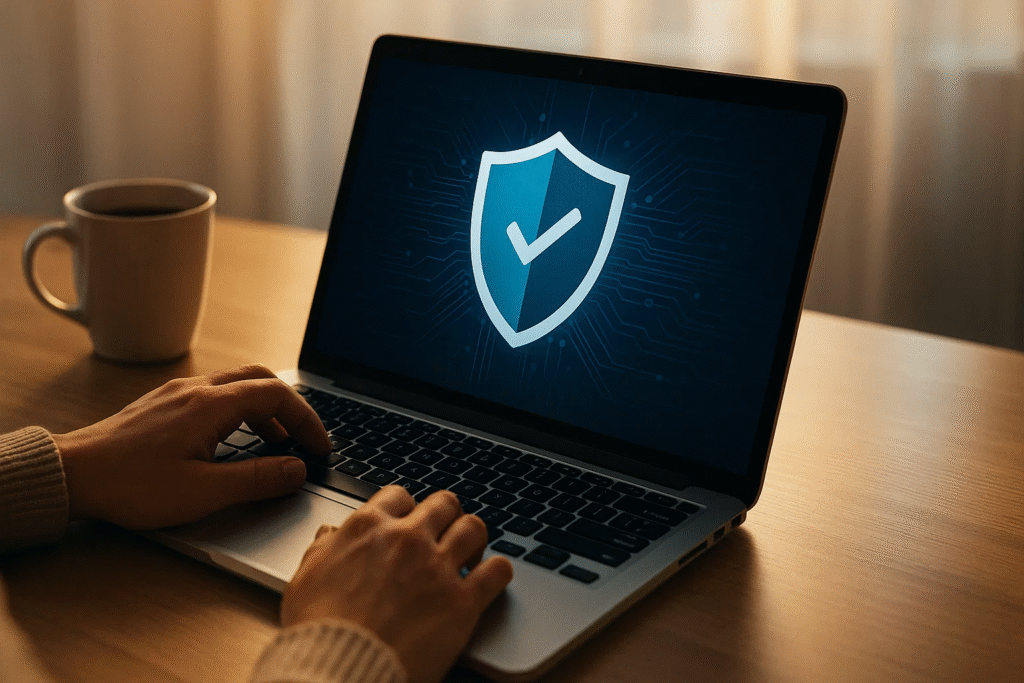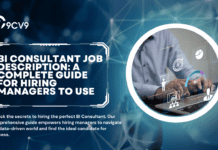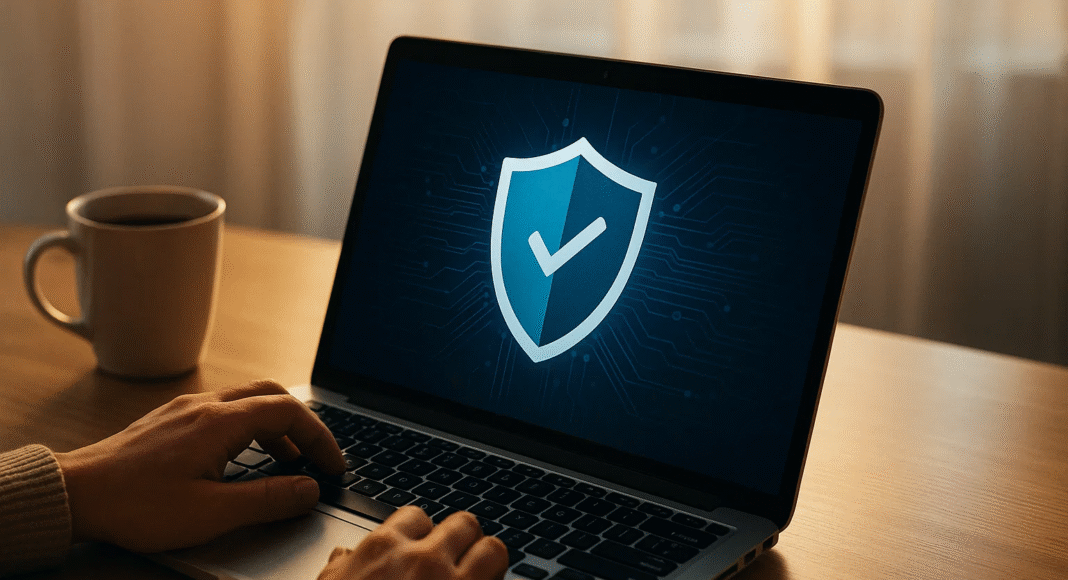Key Takeaways
- Computer security software protects devices from malware, unauthorized access, and data breaches using real-time threat detection and prevention.
- Key features include antivirus, firewall, encryption, and behavioral analysis for comprehensive digital protection.
- Choosing the right software involves evaluating security needs, system compatibility, and ongoing threat response capabilities.
In today’s digital-first world, the reliance on computers, networks, and internet-connected systems has become the backbone of both personal life and professional operations. However, as digital connectivity grows, so does the risk of cyber threats. From malicious software and phishing attacks to ransomware and data breaches, the modern computing environment is fraught with vulnerabilities that can lead to devastating consequences if not proactively addressed. It is within this complex and increasingly hostile cyber landscape that computer security software emerges as an indispensable safeguard for protecting critical systems, confidential data, and user privacy.
Also, read our top guide on the Top 10 Best Computer Security Software in 2025.

Computer security software refers to a broad range of digital tools designed to defend against unauthorized access, data theft, malicious programs, and other cyber threats that target computers and related systems. Whether it’s a personal laptop, a corporate workstation, or an enterprise-level server, every device connected to the internet is a potential entry point for cybercriminals. Security software is built to prevent, detect, and neutralize these threats—often in real-time—before they can inflict harm.
Unlike traditional measures such as physical security or password protection alone, modern computer security software employs intelligent algorithms, threat intelligence databases, and proactive scanning mechanisms to create a multi-layered defense system. This includes antivirus programs that identify and eliminate malicious code, firewalls that filter out suspicious network traffic, anti-malware tools that protect against spyware and trojans, and comprehensive security suites that offer all-in-one solutions for both endpoint and internet security.
As cyberattacks grow in sophistication—leveraging artificial intelligence, zero-day exploits, and social engineering tactics—the need for robust, up-to-date computer security solutions has never been greater. Businesses face significant financial and reputational damage from data leaks, while individuals risk identity theft, loss of personal information, and compromise of financial accounts. In response, computer security software continues to evolve with features such as behavioral analysis, real-time updates, cloud-based threat intelligence, and encryption technologies that work behind the scenes to ensure digital safety.
This blog explores what computer security software is, how it works, and why it’s critical in today’s technology-driven era. From understanding its core functionalities and various types to uncovering how it actively protects devices from known and emerging threats, readers will gain a comprehensive perspective on one of the most essential pillars of modern cybersecurity. Whether you’re a casual computer user, a small business owner, or a tech-savvy professional, having a solid grasp of how computer security software operates is key to making informed decisions and maintaining a secure digital environment.
By the end of this article, you will not only understand what constitutes computer security software, but also how it functions behind the scenes to keep your digital life safe from ever-evolving threats—and why neglecting it can leave you dangerously exposed in an increasingly connected world.
Before we venture further into this article, we would like to share who we are and what we do.
About 9cv9
9cv9 is a business tech startup based in Singapore and Asia, with a strong presence all over the world.
With over nine years of startup and business experience, and being highly involved in connecting with thousands of companies and startups, the 9cv9 team has listed some important learning points in this overview of What is Computer Security Software and How It Works.
If your company needs recruitment and headhunting services to hire top-quality employees, you can use 9cv9 headhunting and recruitment services to hire top talents and candidates. Find out more here, or send over an email to [email protected].
Or just post 1 free job posting here at 9cv9 Hiring Portal in under 10 minutes.
What is Computer Security Software and How It Works
- What is Computer Security Software and How It Works
- How Computer Security Software Works
- Key Features of Effective Computer Security Software
- Benefits of Using Computer Security Software
- Choosing the Right Computer Security Software
1. What is Computer Security Software and How It Works
Computer security software refers to a broad category of digital tools and programs designed to protect computer systems, networks, and data from unauthorized access, cyberattacks, and malware infections. These software solutions are critical for safeguarding both personal and enterprise-level computing environments from a growing number of digital threats.
Definition and Core Purpose
What Does Computer Security Software Do?
- Monitors, detects, and blocks malicious activities in real-time.
- Protects systems from viruses, trojans, spyware, and ransomware.
- Prevents unauthorized access through firewalls and network monitoring tools.
- Safeguards sensitive data with encryption and secure browsing tools.
- Ensures system integrity through regular updates and threat intelligence.
Why Is It Essential in the Digital Era?
- Rapid increase in cyber threats and attack vectors.
- Rising incidents of identity theft, financial fraud, and corporate espionage.
- Heavy dependence on online transactions, cloud storage, and digital communication.
- Regulatory compliance requirements (e.g., GDPR, HIPAA, PCI-DSS).
Common Types of Computer Security Software
Computer security software encompasses various specialized tools, each designed to protect against specific types of threats or vulnerabilities.
1. Antivirus Software
- Detects and removes viruses, worms, trojans, and rootkits.
- Performs scheduled scans and real-time protection.
- Example: Norton Antivirus, Bitdefender Antivirus Plus, Avast Free Antivirus
2. Anti-Malware Tools
- Targets a broader range of threats, including spyware, adware, ransomware, and keyloggers.
- Often complements antivirus software for more comprehensive protection.
- Example: Malwarebytes, Spybot Search & Destroy
3. Firewalls
- Controls incoming and outgoing network traffic based on predetermined security rules.
- Protects systems from unauthorized access and network-based attacks.
- Available as both software and hardware.
- Example: ZoneAlarm, Windows Defender Firewall, Comodo Firewall
4. Endpoint Protection Platforms (EPP)
- Offers centralized security management for multiple devices (endpoints).
- Integrates antivirus, anti-malware, firewall, and intrusion prevention tools.
- Primarily used by businesses and large organizations.
- Example: Symantec Endpoint Protection, CrowdStrike Falcon, Sophos Intercept X
5. Internet Security Suites
- Bundled software packages combining antivirus, anti-malware, firewall, email protection, and parental controls.
- Designed for all-around security for home and small office users.
- Example: Kaspersky Internet Security, McAfee Total Protection
6. Encryption Software
- Encrypts files, emails, and hard drives to prevent unauthorized data access.
- Essential for protecting confidential or sensitive information.
- Example: VeraCrypt, AxCrypt, BitLocker
7. Secure Browsing Tools
- Protects users from phishing sites, malicious ads, and tracking cookies.
- Ensures safe web transactions and blocks harmful web content.
- Example: AVG Secure Browser, HTTPS Everywhere, DuckDuckGo Privacy Essentials
Comparison Table: Types of Computer Security Software
| Software Type | Primary Function | Best Use Case | Popular Examples |
|---|---|---|---|
| Antivirus | Scans and removes viruses | Basic device protection | Norton, Bitdefender, Avast |
| Anti-Malware | Detects spyware, ransomware, adware | Supplemental to antivirus | Malwarebytes, Spybot |
| Firewall | Monitors and filters network traffic | Blocking unauthorized access | ZoneAlarm, Windows Defender Firewall |
| Endpoint Protection | Unified threat management for multiple devices | Enterprise security management | CrowdStrike, Sophos, Symantec |
| Internet Security Suite | All-in-one protection | Home and small office environments | Kaspersky, McAfee, ESET |
| Encryption Software | Encrypts sensitive files/data | Securing confidential information | VeraCrypt, BitLocker, AxCrypt |
| Secure Browsing Tools | Blocks unsafe websites, trackers | Safer internet browsing | AVG Secure Browser, DuckDuckGo, HTTPS Everywhere |
Emerging Trends in Computer Security Software
Cloud-Based Security Solutions
- Hosted in the cloud for easy deployment and scalability.
- Real-time threat intelligence updates across all devices.
- Example: Cisco Umbrella, Microsoft Defender for Cloud
AI-Powered Cybersecurity Tools
- Uses machine learning and behavioral analytics to detect anomalies.
- Automatically adapts to new threats without manual intervention.
- Example: Darktrace, SentinelOne
Zero Trust Architecture
- Operates under the principle of “never trust, always verify.”
- Requires continuous validation of users and devices.
- Integrated with modern security software platforms.
Conclusion of Section
Understanding what computer security software is—and the different forms it takes—is fundamental for maintaining a secure digital environment. Whether you are an individual user trying to protect your home laptop or an IT administrator managing corporate infrastructure, selecting the right combination of security tools is critical. The next section will explore how these software solutions actually work behind the scenes, providing deeper insight into the mechanisms that power today’s digital defense systems.
2. How Computer Security Software Works
Computer security software operates through a combination of advanced algorithms, real-time threat intelligence, signature-based scanning, and behavior-based detection to prevent unauthorized access, malware infections, and data breaches. These systems are designed to function continuously, operating silently in the background while offering active protection against a wide variety of threats.
The underlying mechanisms of how security software works depend on the type of protection it provides. From antivirus detection and firewall filtering to encryption protocols and endpoint monitoring, each component plays a vital role in the overall cybersecurity strategy.
Key Functional Components of Security Software
1. Threat Detection Mechanisms
- Signature-Based Detection
- Uses a database of known malware signatures (digital fingerprints).
- Compares files and programs against this database to identify threats.
- Effective for detecting known malware.
- Example: Traditional antivirus programs like Avast or McAfee.
- Heuristic Analysis
- Analyzes code behavior and patterns to detect new or modified malware.
- Identifies potential threats that are not yet in signature databases.
- Useful for detecting zero-day attacks and polymorphic viruses.
- Behavioral Monitoring
- Observes real-time system activity to detect abnormal behavior.
- Flags suspicious processes such as unauthorized file encryption or registry changes.
- Example: Bitdefender Advanced Threat Defense uses behavior-based detection.
2. Real-Time Scanning and Background Protection
- Continuously monitors system files, downloads, and active processes.
- Blocks threats the moment they are detected, without waiting for user action.
- Provides protection while browsing, emailing, or transferring files.
- Example: Windows Defender offers active real-time scanning.
3. Quarantine and Removal Processes
- Once a threat is detected, it is either deleted or moved to a quarantine folder.
- Quarantined files are isolated to prevent further harm or propagation.
- Users can choose to restore or permanently delete quarantined items.
Operational Workflow of Computer Security Software
| Stage | Function | Example Action |
|---|---|---|
| Initialization | Loads security definitions and updates from the vendor’s servers | Daily virus signature updates by Kaspersky |
| Scanning & Monitoring | Scans files, processes, and system behavior continuously | Detects malware during email downloads |
| Threat Identification | Flags threats using heuristic, behavioral, and signature analysis | Identifies a trojan through pattern recognition |
| Quarantine/Block Action | Isolates or removes harmful software | Moves infected file to secure vault |
| Reporting & Alerts | Notifies user with recommendations for action | Sends pop-up alert or logs events in dashboard |
| Remediation | Performs cleanup, restores affected files or settings | Removes ransomware and restores registry entries |
How Specific Tools Work Behind the Scenes
Antivirus Software
- Scheduled and Manual Scans
- Allows users to set regular scanning schedules or perform on-demand scans.
- Scans the file system, memory, boot sectors, and emails for threats.
- Auto-Update Mechanism
- Connects to the vendor’s server to fetch new virus definitions.
- Ensures updated protection against the latest threats.
- Example:
- Norton Antivirus automatically scans USB drives upon insertion.
- Avira Antivirus notifies users of system vulnerabilities during scan.
Firewall Software
- Packet Filtering
- Inspects each data packet entering or leaving the system.
- Blocks unauthorized or suspicious packets based on predefined rules.
- Stateful Inspection
- Tracks the state of active connections and ensures data packets are part of a valid session.
- Application Control
- Monitors which applications can access the internet.
- Blocks apps with suspicious outbound communication.
- Example:
- Comodo Firewall prompts users when unknown software attempts to access the internet.
Anti-Malware Programs
- Rootkit Detection
- Scans for hidden malware that tries to gain administrative-level access.
- Browser Protection
- Prevents phishing, malicious pop-ups, and redirects to unsafe websites.
- Cloud-Based Threat Detection
- Sends suspicious files to cloud servers for detailed analysis using AI.
- Example:
- Malwarebytes Premium uses AI to detect malicious behavior in real time.
Role of Artificial Intelligence and Machine Learning
AI Integration in Modern Security Software
- Anomaly Detection
- AI systems learn normal behavior of devices and users.
- Alerts when anomalies like unauthorized login times or IP changes occur.
- Automated Threat Response
- Instantly neutralizes threats by blocking or sandboxing suspicious files.
- Predictive Analysis
- Uses large datasets to predict and block new attack patterns.
- Example:
- SentinelOne uses AI to autonomously stop threats before execution.
Chart: Detection Techniques and Their Use Cases
| Detection Technique | How It Works | Best For |
|---|---|---|
| Signature-Based | Compares files with a database of known threats | Common viruses, worms |
| Heuristic-Based | Identifies suspicious code structures and patterns | Unknown or modified malware |
| Behavioral Monitoring | Tracks program behavior to detect anomalies | Zero-day attacks, ransomware |
| Machine Learning | Learns from past data to predict and identify threats | Advanced persistent threats (APTs) |
| Sandboxing | Executes suspicious code in an isolated environment | Safe analysis of potentially dangerous files |
Cloud-Based vs On-Premise Security Software: Key Differences
| Feature | Cloud-Based Software | On-Premise Software |
|---|---|---|
| Deployment | Hosted on remote servers | Installed locally on devices or servers |
| Updates | Automatic, in real time | Manual or scheduled updates |
| Scalability | Highly scalable with minimal infrastructure | Requires physical resource expansion |
| Maintenance | Managed by service provider | Requires in-house IT management |
| Example Tools | Microsoft Defender for Cloud, Cisco Umbrella | Kaspersky Endpoint Security, ESET NOD32 |
Conclusion of Section
Computer security software works through a complex combination of scanning, detection, monitoring, blocking, and remediation technologies—often enhanced by cloud integration and AI-driven intelligence. From preventing malware infections to identifying advanced persistent threats, these systems provide a comprehensive defense strategy for all digital environments. By understanding how each tool functions behind the scenes, users and organizations can make more informed decisions about their cybersecurity framework and choose solutions that match their unique security needs.
3. Key Features of Effective Computer Security Software
The effectiveness of computer security software depends on the robustness, depth, and adaptability of its features. Advanced tools go beyond basic antivirus protection, offering multi-layered defenses against evolving cyber threats. Understanding these features is essential for individuals and organizations aiming to safeguard digital assets, maintain regulatory compliance, and ensure uninterrupted system performance.
Core Protection Capabilities
1. Real-Time Threat Detection
- Monitors system activity continuously to identify threats as they occur.
- Protects against malware, spyware, ransomware, and trojans in real-time.
- Uses both signature-based and behavior-based detection methods.
- Example: Bitdefender Total Security uses Advanced Threat Defense for proactive monitoring.
2. Multi-Layered Malware Protection
- Integrates multiple protection layers such as:
- Signature-based scanning
- Heuristic analysis
- Machine learning and AI detection
- Behavioral monitoring
- Blocks malware at various system levels—file, application, and network.
- Example: Norton 360 offers comprehensive protection across all layers.
Advanced Security Features
3. Firewall Integration
- Filters incoming and outgoing network traffic.
- Prevents unauthorized access and stops data leakage.
- Supports:
- Packet inspection
- Stateful inspection
- Application-level controls
- Example: ZoneAlarm Pro Firewall provides customizable firewall settings.
4. Anti-Ransomware Defense
- Identifies and blocks file encryption attempts from unauthorized sources.
- Offers rollback features to restore encrypted files.
- Creates secure backups of sensitive data as a precaution.
- Example: Trend Micro Maximum Security includes Folder Shield to protect against ransomware.
5. Web Protection & Anti-Phishing
- Blocks access to malicious websites and prevents phishing attacks.
- Scans emails and browser activity for fraud indicators.
- Verifies the authenticity of SSL certificates and warning indicators.
- Example: Kaspersky Internet Security scans URLs for phishing and fraudulent content.
Data Protection & Privacy Control
6. File Encryption and Secure Storage
- Encrypts sensitive files and folders using robust encryption algorithms (e.g., AES-256).
- Prevents unauthorized access to personal or business data.
- Provides secure vaults for storing credentials and financial documents.
- Example: McAfee Total Protection offers a built-in file lock utility.
7. Identity Theft Protection
- Monitors credit card numbers, email addresses, and SSNs on the dark web.
- Alerts users when personal information is at risk.
- Includes identity monitoring services with real-time notifications.
- Example: Norton LifeLock integrates identity theft monitoring with antivirus protection.
8. VPN Integration
- Offers encrypted internet connections to ensure private browsing.
- Hides IP addresses and prevents ISP tracking or geo-blocking.
- Protects sensitive data over public Wi-Fi networks.
- Example: Avira Phantom VPN is bundled with Avira security solutions.
Performance and Usability Enhancements
9. System Optimization Tools
- Includes disk cleanup, registry repair, and startup manager utilities.
- Improves device performance while maintaining security.
- Reduces boot time and minimizes background process interference.
- Example: AVG TuneUp integrates system speed-up features with security.
10. User-Friendly Interface
- Simplifies navigation with dashboards, status indicators, and alerts.
- Provides actionable recommendations for non-technical users.
- Offers customization of scan schedules and real-time protection levels.
Management and Control Features
11. Parental Controls
- Filters content and restricts access based on age-appropriate rules.
- Limits screen time and monitors online activities of children.
- Allows remote management through parental control dashboards.
- Example: ESET Smart Security Premium includes robust parental control tools.
12. Centralized Dashboard for Multi-Device Protection
- Offers a unified control panel to manage multiple devices.
- Ideal for families or small businesses with diverse device ecosystems.
- Enables remote updates, license management, and policy enforcement.
- Example: Sophos Home Premium allows centralized management via the cloud.
13. Cloud-Based Threat Intelligence
- Continuously updates threat databases through cloud servers.
- Enables faster detection of emerging threats via collective intelligence.
- Reduces reliance on local definitions and enhances scalability.
- Example: Cisco AMP for Endpoints uses cloud analytics to stop threats.
Feature Comparison Table: Leading Security Software
| Feature | Norton 360 | Bitdefender TS | McAfee Total Prot. | Kaspersky IS |
|---|---|---|---|---|
| Real-Time Protection | ✔️ | ✔️ | ✔️ | ✔️ |
| Anti-Ransomware | ✔️ | ✔️ | ✔️ | ✔️ |
| VPN Integration | ✔️ | ✔️ | ✔️ | ❌ |
| Firewall | ✔️ | ✔️ | ✔️ | ✔️ |
| Identity Protection | ✔️ | ❌ | ✔️ | ❌ |
| Parental Controls | ✔️ | ✔️ | ❌ | ✔️ |
| Cloud Threat Intelligence | ✔️ | ✔️ | ✔️ | ✔️ |
| Multi-Device Management | ✔️ | ✔️ | ✔️ | ✔️ |
Chart: Importance of Key Security Features by Use Case
plaintextCopyEdit| Feature | Home Users | Small Business | Enterprise |
|----------------------|------------|----------------|------------|
| Real-Time Protection | High | High | High |
| Firewall | Medium | High | High |
| Anti-Ransomware | High | High | High |
| VPN | High | Medium | Medium |
| Identity Protection | Medium | High | High |
| Central Management | Low | High | High |
| Parental Control | High | Low | Low |
Conclusion of Section
Effective computer security software must deliver a comprehensive set of features that work together to protect against modern cyber threats. From real-time threat detection and anti-ransomware capabilities to VPN integration and centralized dashboards, the ideal security solution should be adaptive, scalable, and user-friendly. Organizations and individuals alike must evaluate these features based on their specific needs and digital environments to make informed software choices.
4. Benefits of Using Computer Security Software
Computer security software plays a critical role in safeguarding digital environments from ever-evolving cyber threats. Its comprehensive protection not only shields users from immediate risks but also enhances system performance, data integrity, and user confidence. This section explores the multifaceted benefits of deploying reliable computer security software in both personal and professional settings.
Enhanced Protection Against Cyber Threats
- Comprehensive Malware Defense
- Blocks viruses, worms, Trojans, ransomware, spyware, and adware.
- Protects users from both known threats (via signature databases) and emerging threats (via heuristic and behavior analysis).
- Example: Symantec Norton 360 offers multilayered malware defense, reducing infection risks significantly.
- Prevention of Data Breaches
- Prevents unauthorized access to sensitive data by scanning for vulnerabilities.
- Secures login credentials and personal information through encryption and monitoring.
- Example: McAfee Total Protection incorporates identity theft protection to guard against data leaks.
- Protection Against Phishing and Fraud
- Identifies and blocks phishing emails and malicious websites that aim to steal user information.
- Prevents fraudulent transactions and unauthorized access to online accounts.
- Example: Avast Premium Security uses AI-powered phishing detection to block thousands of fraudulent sites daily.
Improved System Performance and Stability
- Minimized System Slowdown
- Modern security software optimizes system resources during scans.
- Background scans allow users to continue work without disruption.
- Example: AVG TuneUp combined with AVG Antivirus improves system speed while securing the device.
- Automated Updates for Maximum Efficiency
- Automatic definition and software updates ensure protection against new threats without user intervention.
- Patches vulnerabilities in operating systems and installed software to prevent exploit attacks.
- Example: Windows Defender seamlessly updates via Windows Update, providing continuous protection.
- Reduced Risk of System Crashes and Corruption
- By eliminating malware that corrupts system files, security software helps maintain OS stability.
- Reduces unexpected crashes caused by virus-related disruptions.
Financial and Legal Safeguards
- Cost Savings by Avoiding Cybercrime Losses
- Avoids costly damage from ransomware payments, data restoration, and system repair.
- Prevents fines and penalties related to data breaches or non-compliance with regulations (e.g., GDPR, HIPAA).
- Example: IBM estimates that the average data breach cost was $4.45 million in 2023, underscoring the financial impact.
- Protecting Intellectual Property and Sensitive Data
- Safeguards trade secrets, business plans, and client data from theft.
- Encryption tools prevent unauthorized disclosure or data leaks.
- Example: Corporations like Apple invest heavily in endpoint security to protect proprietary technology.
Enhanced Privacy and User Confidence
- Anonymity and Secure Internet Browsing
- VPNs included in many security suites mask user IP addresses and encrypt data traffic.
- Prevents ISP tracking, data harvesting, and surveillance.
- Example: Norton Secure VPN secures users on public Wi-Fi, protecting sensitive communications.
- Identity Theft and Fraud Monitoring
- Alerts users about potential identity theft incidents.
- Continuous monitoring of credit reports, social media, and online activity.
- Example: LifeLock Identity Theft Protection provides real-time alerts for suspicious activity on financial accounts.
- Peace of Mind and Reduced Anxiety
- Knowing devices are protected reduces stress and worry related to cyber threats.
- Users can confidently perform online banking, shopping, and communication.
- Example: Businesses report higher employee productivity when robust endpoint protection is in place.
Convenience and Ease of Use
- Automated Security Tasks
- Scheduled scans, automatic updates, and threat removal reduce manual maintenance.
- User-friendly dashboards display security status and allow easy customization.
- Example: Malwarebytes Premium automates scanning and threat remediation with minimal user input.
- Multi-Device and Cross-Platform Protection
- Single subscriptions often cover multiple devices, including PCs, Macs, smartphones, and tablets.
- Consistent protection across all platforms simplifies management.
- Example: Bitdefender Family Pack supports up to 15 devices across Windows, macOS, Android, and iOS.
Business Continuity and Compliance
- Ensuring Uptime and Productivity
- Prevents malware-related downtime by blocking infections early.
- Supports remote work environments with secure VPNs and cloud management.
- Example: Cisco Secure Endpoint reduces breach impact, minimizing operational disruption.
- Compliance with Industry Standards
- Helps organizations meet cybersecurity requirements mandated by laws and regulations.
- Facilitates audits with detailed logging and reporting features.
- Example: Healthcare providers use HIPAA-compliant security software to protect patient data.
Benefit Summary Table
| Benefit Category | Key Advantages | Example Software |
|---|---|---|
| Threat Protection | Blocks malware, ransomware, phishing | Norton 360, Bitdefender |
| System Performance | Optimizes speed, minimizes slowdowns | AVG TuneUp, Windows Defender |
| Financial Safeguards | Avoids costly data breaches and fines | McAfee Total Protection |
| Privacy Protection | VPN, identity theft monitoring | Norton Secure VPN, LifeLock |
| Ease of Use | Automated scans and updates, multi-device support | Malwarebytes, Bitdefender |
| Business Continuity and Compliance | Ensures uptime, regulatory compliance | Cisco Secure Endpoint |
Visual Representation: Impact of Computer Security Software on Cyber Risk
plaintextCopyEdit| Without Security Software | With Security Software |
|--------------------------|------------------------|
| High risk of infection | Minimal risk |
| Frequent system crashes | Stable system |
| Data breaches common | Data protected |
| High financial losses | Cost savings |
| Privacy vulnerabilities | Enhanced privacy |
Conclusion
The advantages of utilizing computer security software extend far beyond basic virus scanning. From robust threat prevention and system optimization to financial protection and enhanced privacy, effective security solutions are indispensable in today’s digital landscape. Businesses and individuals alike benefit from reduced risks, improved operational efficiency, and increased confidence in their digital interactions, making computer security software a vital investment for long-term digital safety and success.
5. Choosing the Right Computer Security Software
Selecting the appropriate computer security software is a critical decision that directly impacts the safety, performance, and user experience of your digital environment. With a plethora of options available, it is essential to evaluate key factors carefully to ensure optimal protection tailored to your specific needs. This section provides a detailed guide to help individuals and organizations make informed choices when selecting computer security software.
Assessing Your Security Needs
- Identify the Primary Purpose
- Determine whether the software is for personal, business, or enterprise use.
- Personal use often requires basic antivirus and firewall protection.
- Businesses may need advanced endpoint protection, centralized management, and compliance tools.
- Example: Small businesses might choose Bitdefender GravityZone for its scalable features.
- Consider Device Types and Operating Systems
- Confirm compatibility with Windows, macOS, Linux, Android, or iOS.
- Multi-device protection is crucial for users with various hardware.
- Example: Norton 360 supports multiple platforms and devices under a single subscription.
- Evaluate User Expertise
- For non-technical users, prioritize software with user-friendly interfaces and automated functions.
- IT professionals may require granular controls and customizable security policies.
- Analyze Risk Exposure
- High-risk environments such as financial institutions need robust multi-layered security.
- Casual users with limited online activity may opt for lighter solutions.
Key Features to Look For
- Real-Time Threat Detection
- Software should provide continuous monitoring and immediate threat blocking.
- Advanced heuristic and AI-based detection help identify zero-day threats.
- Example: Kaspersky’s real-time scanning uses machine learning to identify emerging threats.
- Comprehensive Malware Protection
- Protection against viruses, ransomware, spyware, adware, and phishing attacks.
- Includes firewall integration and web protection for safer browsing.
- Example: McAfee Total Protection combines malware scanning with a secure firewall.
- Automatic Updates
- Frequent signature and software updates are essential to stay ahead of evolving threats.
- Prefer solutions with automatic patching to reduce user intervention.
- Performance Optimization
- Low system resource consumption during scans and background tasks.
- Features like scheduled scans and gaming mode to avoid performance disruption.
- Additional Tools
- VPN for encrypted internet access.
- Password managers for secure credential storage.
- Identity theft protection and data backup services.
Evaluating Software Reliability and Reputation
- Check Independent Lab Test Results
- Refer to reputable cybersecurity testing organizations such as AV-Test, AV-Comparatives, and SE Labs.
- Compare detection rates, false positives, and impact on system performance.
- Example: AV-Test scores provide objective data to compare products like Trend Micro and Sophos.
- User Reviews and Ratings
- Analyze feedback on ease of use, customer support, and real-world protection effectiveness.
- Platforms like Trustpilot, CNET, and PCMag offer extensive user reviews.
- Company Reputation and Support
- Established companies with a long track record often provide better security updates and support.
- Check availability of customer support via chat, phone, or email.
Cost Considerations
- Free vs. Paid Solutions
- Free versions may offer basic antivirus but lack advanced features and support.
- Paid software usually provides comprehensive protection and additional tools.
- Example: Avast Free Antivirus vs. Avast Premium Security comparison.
- Subscription Models
- Annual or multi-year subscriptions with tiered pricing based on features and device count.
- Consider budget constraints while prioritizing necessary features.
- Trial Periods and Money-Back Guarantees
- Opt for software that offers free trials or money-back guarantees to test compatibility and performance.
Comparative Table: Popular Computer Security Software
| Software Name | Best For | Key Features | Pricing (Annual) | Platforms Supported |
|---|---|---|---|---|
| Norton 360 | Personal and Family Use | Real-time protection, VPN, password manager | $39.99 – $99.99 | Windows, macOS, Android, iOS |
| Bitdefender GravityZone | Small to Medium Businesses | Endpoint security, cloud management | Custom pricing | Windows, macOS, Linux |
| Kaspersky Total Security | Comprehensive Protection | AI-based detection, privacy tools | $49.99 – $89.99 | Windows, macOS, Android |
| McAfee Total Protection | Multi-device Security | Firewall, identity theft protection | $34.99 – $99.99 | Windows, macOS, Android, iOS |
| Avast Premium Security | Budget-friendly | Malware scanning, VPN, software updater | $69.99 | Windows, macOS, Android |
Decision-Making Workflow for Selecting Security Software
| Step | Description | Outcome |
|---|---|---|
| Define security requirements | Identify types of threats and device environment | Clear understanding of needed protection levels |
| Research available options | Use lab tests, reviews, and feature lists | Shortlist suitable software options |
| Test software (trial version) | Evaluate usability, performance impact, and detection | Select best-performing and user-friendly software |
| Compare costs and licenses | Analyze pricing models and subscription details | Choose cost-effective option with necessary features |
| Implement and monitor | Deploy and regularly update security software | Maintain strong protection and system stability |
Summary: Essential Tips for Choosing the Right Security Software
- Prioritize solutions offering real-time threat detection and comprehensive malware coverage.
- Ensure compatibility with all devices and operating systems in use.
- Consider software performance and resource usage to avoid system slowdowns.
- Check independent lab results and user reviews for unbiased evaluations.
- Assess cost against features, support, and licensing flexibility.
- Take advantage of free trials and guarantees before final purchase.
- Opt for software that provides ongoing updates and responsive customer support.
Conclusion
Choosing the right computer security software requires a balanced evaluation of security features, compatibility, reliability, user-friendliness, and cost. By carefully assessing your specific needs and comparing available options using objective data and real-world feedback, you can select a solution that provides robust protection, preserves system performance, and fits within your budget. This careful selection process ensures your digital assets and personal information remain secure against increasingly sophisticated cyber threats.
Conclusion
In today’s increasingly interconnected world, the significance of computer security software cannot be overstated. As cyber threats grow more sophisticated and pervasive, individuals, businesses, and institutions are faced with the constant challenge of safeguarding sensitive information, digital assets, and system infrastructure. From malicious malware and ransomware attacks to phishing schemes and zero-day vulnerabilities, the landscape of cybercrime continues to evolve—making robust computer security software not just a luxury, but a necessity.
Summarizing the Importance of Computer Security Software
- First Line of Defense Against Threats
- Computer security software acts as the primary barrier between digital systems and external cyber threats.
- Whether it’s antivirus, anti-malware, firewalls, or endpoint protection, these tools work collectively to prevent, detect, and respond to potential breaches in real-time.
- Proactive Risk Management
- Advanced features such as heuristic analysis, machine learning-based detection, and cloud-based intelligence empower modern security software to anticipate and mitigate threats before they cause harm.
- This proactive approach significantly reduces the risk of data loss, financial damage, and operational disruption.
- Enhanced Digital Hygiene
- Security software not only protects but also encourages better practices through features like password management, vulnerability patching, and secure browsing.
- Users gain awareness of their digital footprint and become more vigilant about cybersecurity hygiene.
How It Works in Real-World Scenarios
- Behind-the-Scenes Defense Mechanisms
- Real-time scanning, behavior monitoring, and sandbox testing work in tandem to provide continuous protection.
- These processes occur without hindering the user experience, maintaining both security and system efficiency.
- Customizable and Scalable Solutions
- Whether protecting a single personal device or an entire corporate network, modern computer security software offers scalable solutions tailored to various environments.
- Enterprise-level tools provide centralized management, remote monitoring, and compliance features to support business continuity.
- Integration with Emerging Technologies
- Many security suites integrate seamlessly with cloud services, IoT platforms, and mobile ecosystems.
- This ensures that all endpoints, regardless of location or device type, remain protected under a unified security framework.
Why Choosing the Right Software Matters
- Diverse Offerings, Diverse Needs
- With a wide range of software available—ranging from basic free antivirus programs to comprehensive security suites—it is crucial to align the chosen software with specific security needs and risk exposure.
- Businesses, in particular, must evaluate licensing models, compliance requirements, and integration capabilities when making a decision.
- Balancing Performance and Protection
- An effective security solution should offer robust protection without significantly affecting system performance.
- Factors such as update frequency, resource usage, user interface, and customer support also influence the long-term usability and value of the software.
- Cost-Efficiency and ROI
- Investing in reputable and feature-rich security software can prevent significant financial losses due to data breaches or system downtimes.
- Over time, the cost of preventive measures proves far more economical than reactive responses to successful cyberattacks.
Future Outlook of Computer Security Software
- AI and Automation
- Artificial intelligence and automated threat response mechanisms will continue to shape the future of computer security software.
- These technologies enhance accuracy, reduce response times, and provide real-time adaptive protection.
- Cloud-Based Security
- With the growing reliance on cloud computing, security software is evolving to offer cloud-native solutions capable of protecting remote assets and distributed teams.
- Zero Trust Architecture
- Modern security strategies emphasize a “zero trust” approach—where every access attempt is verified and nothing is automatically trusted.
- This shift is influencing how security software is developed and deployed.
Final Thoughts: Staying Ahead in a Digital World
Ultimately, computer security software is an essential component of a secure digital lifestyle. It empowers users and organizations to defend against constantly evolving threats, ensures operational stability, and promotes responsible digital behavior. By understanding what computer security software is, how it works, and what features to prioritize, users can make informed decisions that significantly enhance their cybersecurity posture.
Choosing the right security solution is not a one-time task but an ongoing process that requires periodic evaluation, updates, and adaptations to keep up with emerging threats. Those who invest in reliable and comprehensive computer security software are better equipped to navigate the complex digital landscape with confidence and resilience.
Whether you’re an individual protecting your personal data or a business securing a network of endpoints, adopting the right computer security software is one of the most effective and essential steps toward digital safety.
If you find this article useful, why not share it with your hiring manager and C-level suite friends and also leave a nice comment below?
We, at the 9cv9 Research Team, strive to bring the latest and most meaningful data, guides, and statistics to your doorstep.
To get access to top-quality guides, click over to 9cv9 Blog.
People Also Ask
What is computer security software?
Computer security software protects systems and data from cyber threats like viruses, malware, and unauthorized access.
How does computer security software work?
It scans, detects, and removes malicious threats, while monitoring system behavior to prevent attacks in real time.
Why is computer security software important?
It safeguards sensitive data, maintains system performance, and defends against identity theft, data loss, and cyberattacks.
What are the main types of computer security software?
Common types include antivirus, firewalls, anti-spyware, encryption tools, and endpoint protection platforms.
What threats does computer security software protect against?
It protects against viruses, malware, ransomware, spyware, phishing attacks, trojans, and other malicious programs.
What is the difference between antivirus and computer security software?
Antivirus targets viruses specifically, while full computer security software includes broader protection features like firewalls and anti-malware.
Do I need computer security software on all devices?
Yes, all devices connected to the internet or networks should have protection to avoid breaches and cyber threats.
Can computer security software slow down my system?
Some programs may use system resources, but modern software is optimized for performance and often runs silently in the background.
Is free computer security software reliable?
Free versions offer basic protection, but paid versions provide comprehensive features, faster updates, and premium support.
How often should I update my security software?
It should be updated regularly—ideally daily—to defend against the latest cyber threats and vulnerabilities.
Does computer security software protect against phishing?
Yes, many security suites include phishing protection to block malicious websites and fraudulent emails.
Can computer security software prevent data breaches?
While not foolproof, it greatly reduces the risk by blocking unauthorized access and detecting suspicious activity.
What features should I look for in computer security software?
Look for real-time protection, malware scanning, firewall, secure browsing, encryption, and automatic updates.
Is a firewall part of computer security software?
Yes, many suites include a firewall to monitor and control incoming and outgoing network traffic.
Does computer security software protect my online activity?
Yes, many include secure browsing, anti-tracking, and VPN features to enhance online privacy.
Can it remove existing malware from my computer?
Yes, most programs can detect and remove existing malware, restoring your system to a secure state.
How does behavioral analysis help in security software?
It detects unusual system behavior and flags potential threats, even if the malware is unknown or not in the virus database.
What is endpoint protection in computer security?
It’s a comprehensive approach that protects all endpoints like desktops, laptops, and mobile devices in a network.
Do businesses need different computer security software than individuals?
Yes, businesses need scalable, centralized solutions with advanced features like remote monitoring and compliance tools.
Can I use more than one security software at a time?
Using multiple programs can cause conflicts. It’s best to use a comprehensive suite from a single provider.
Does computer security software protect against ransomware?
Yes, most advanced software includes ransomware protection that detects and blocks encryption-based attacks.
Can it protect my email and attachments?
Yes, many tools scan email attachments and links to prevent phishing and malware attacks through email.
How is cloud-based security software different?
It offers protection through cloud servers, allowing real-time updates and remote monitoring without heavy system load.
Is mobile security part of computer security software?
Many providers offer mobile apps with anti-theft, malware scanning, and secure browsing features for smartphones.
Can computer security software be managed remotely?
Yes, enterprise solutions often include centralized dashboards for remote updates and threat management.
How do I know if my computer security software is working?
You can check status reports, scan logs, and ensure real-time protection is enabled in the software dashboard.
What is heuristic analysis in security software?
It identifies threats by analyzing behavior and code patterns, even if the malware isn’t in the virus database.
What happens if I don’t use security software?
You risk data loss, identity theft, unauthorized access, and system corruption from unprotected exposure to cyber threats.
Are software updates important for security tools?
Yes, updates fix vulnerabilities and improve the software’s ability to detect and stop the latest threats.
Can computer security software help with compliance?
Yes, it supports regulatory compliance by ensuring data protection, access control, and activity logging.































![Writing A Good CV [6 Tips To Improve Your CV] 6 Tips To Improve Your CV](https://blog.9cv9.com/wp-content/uploads/2020/06/2020-06-02-2-100x70.png)


